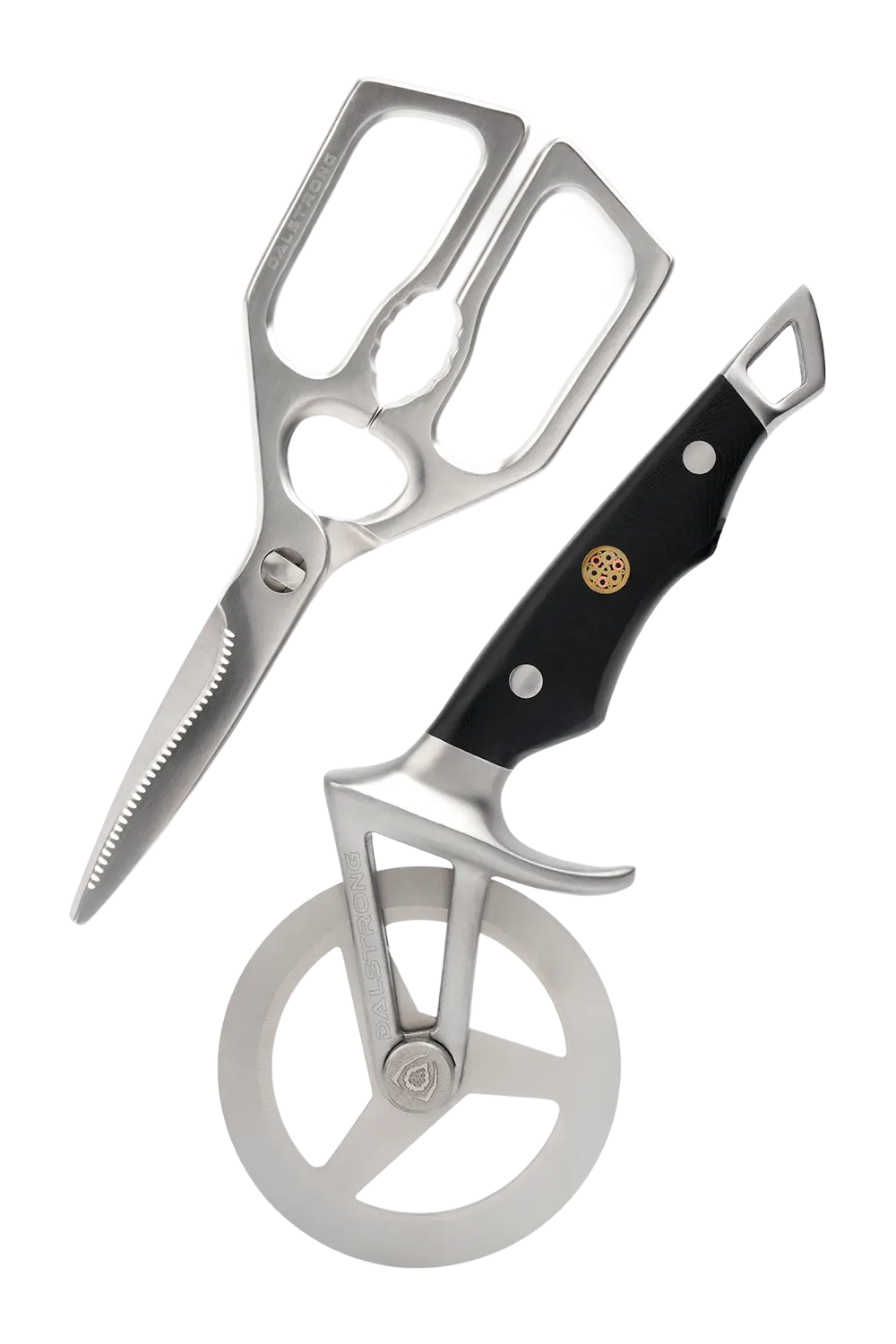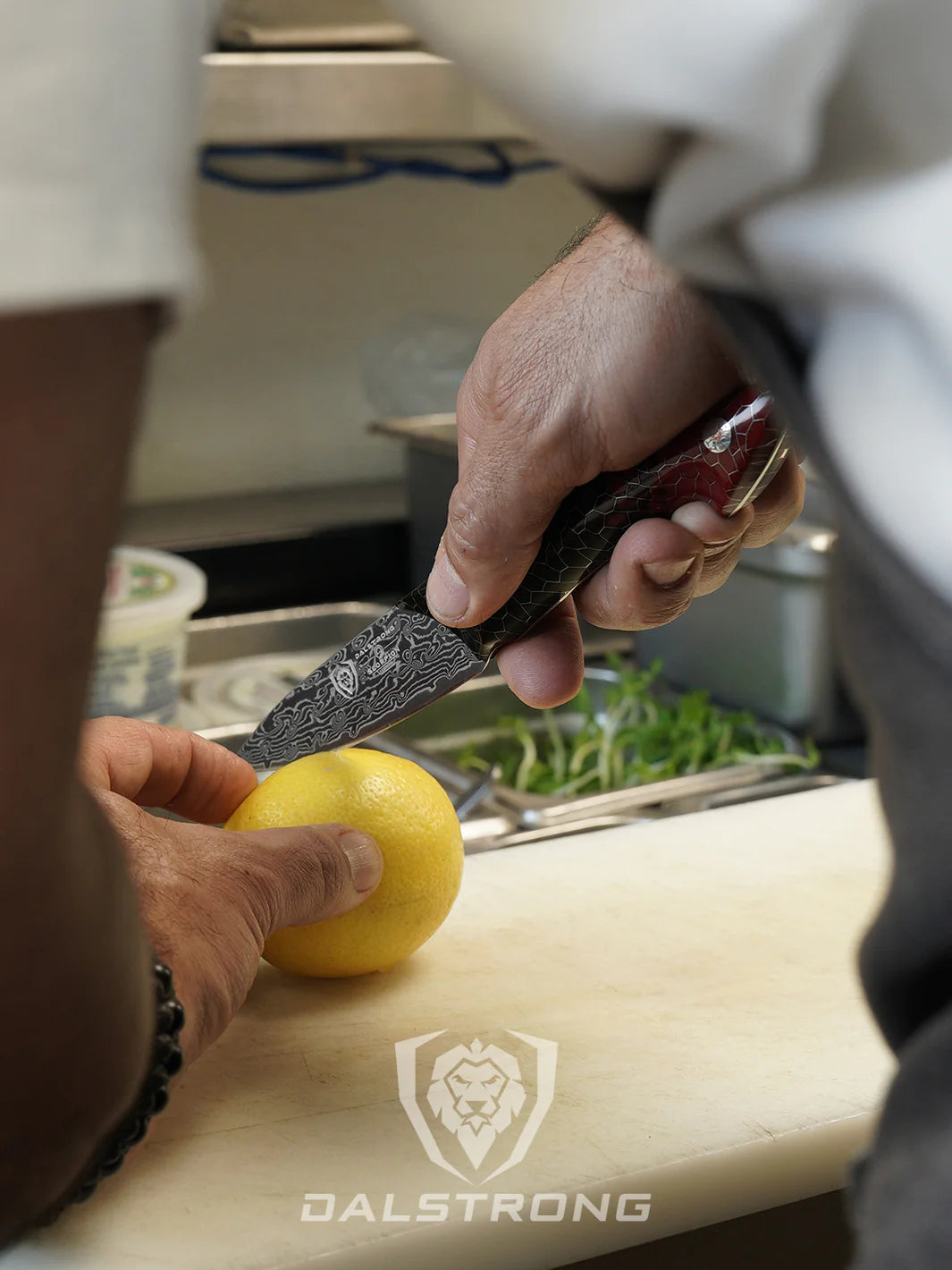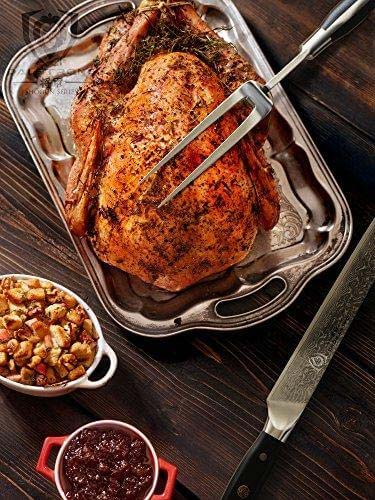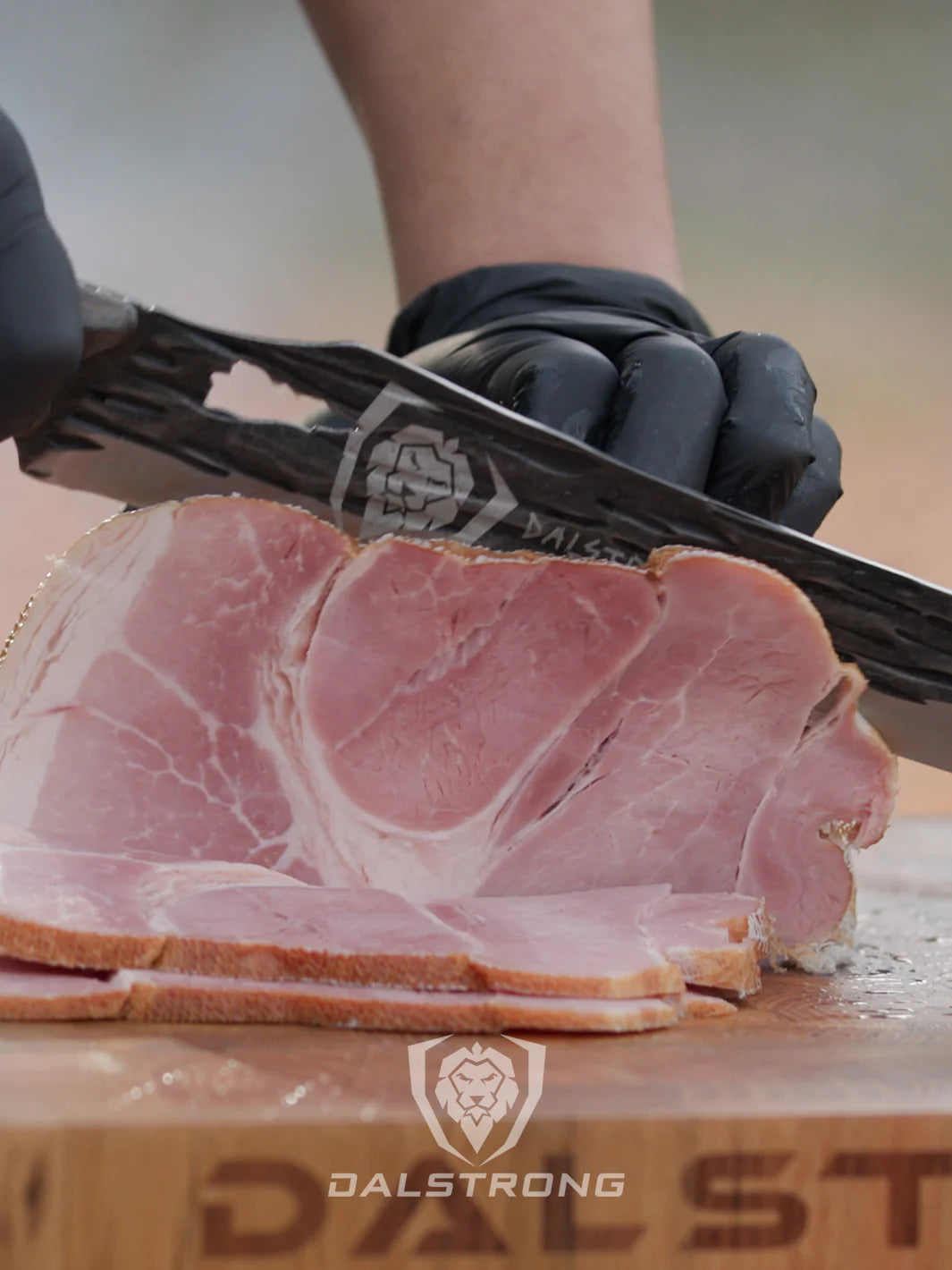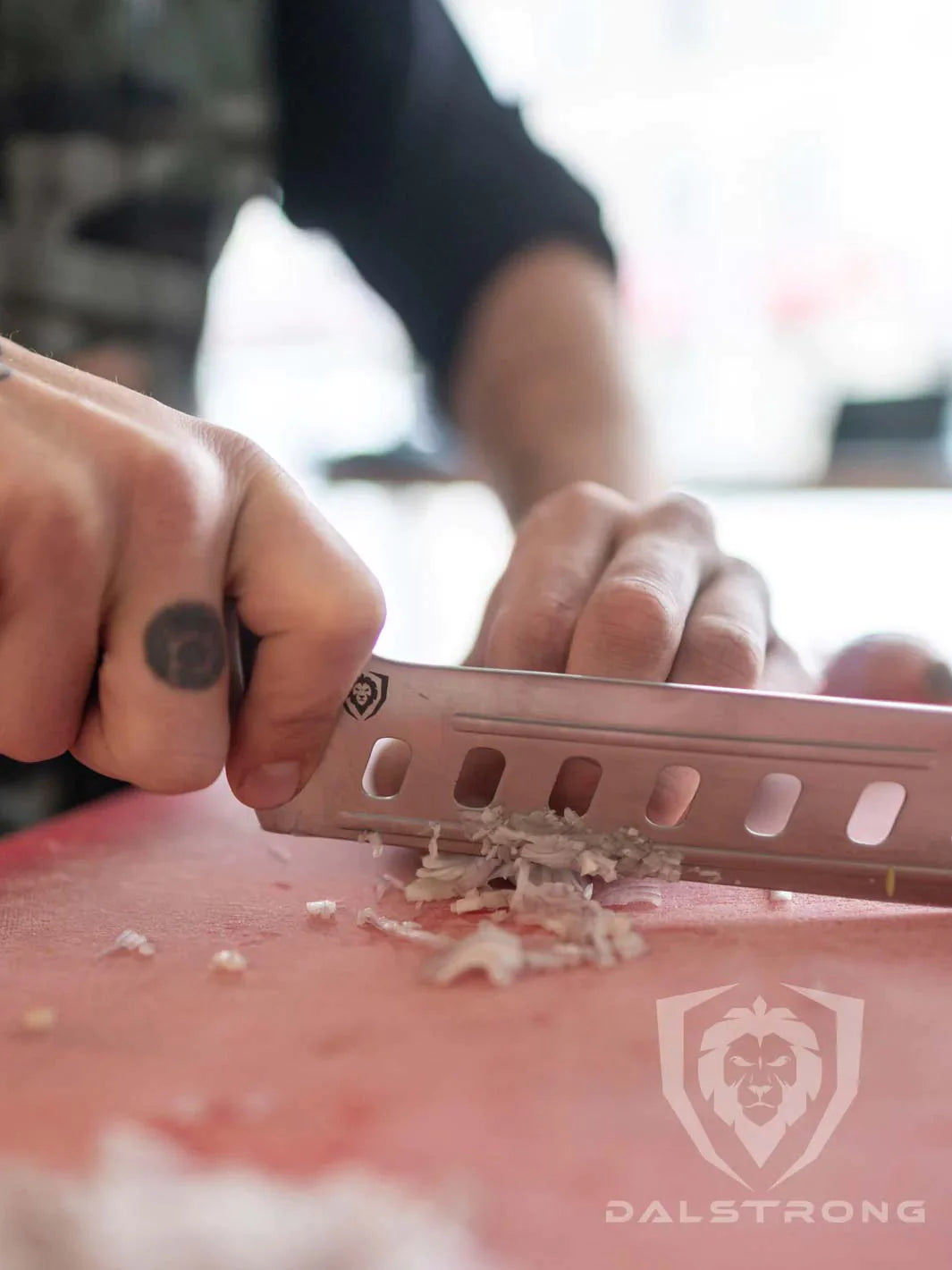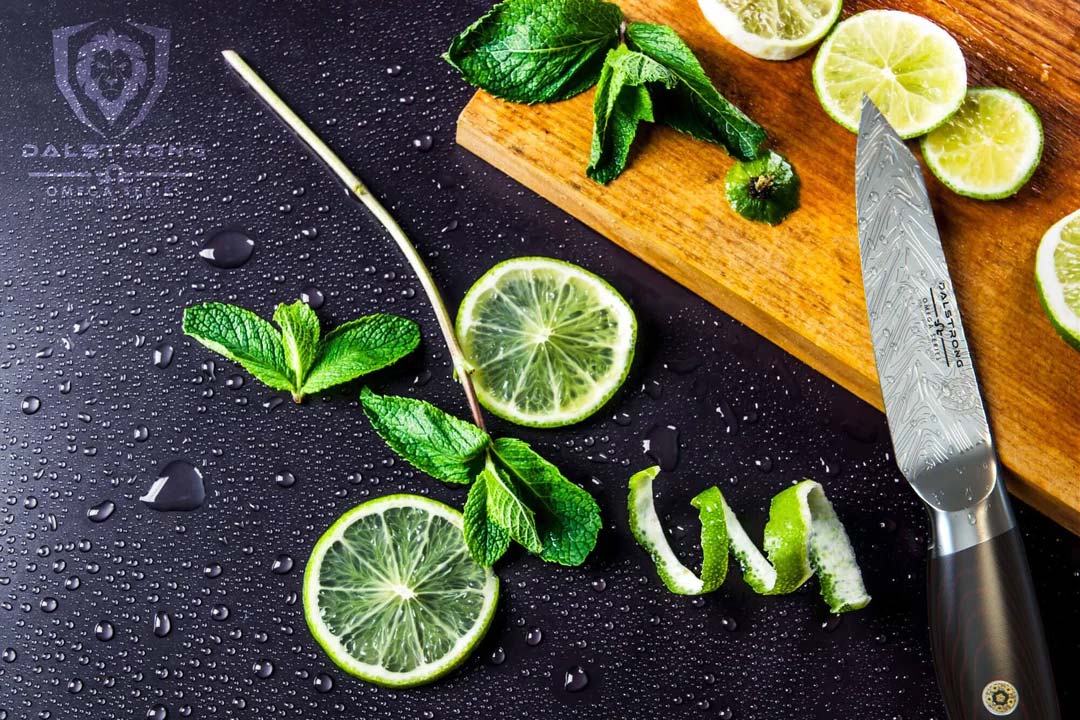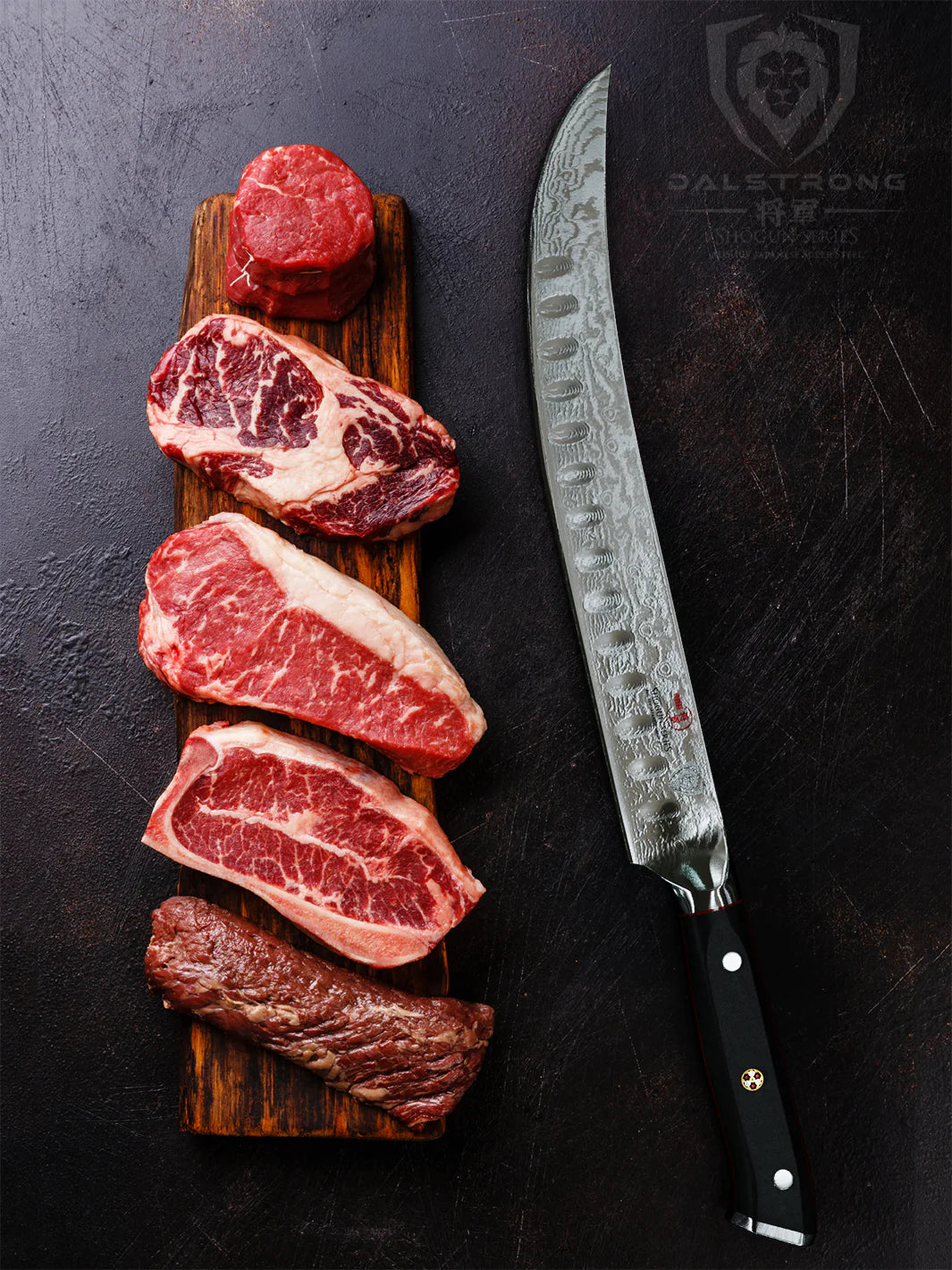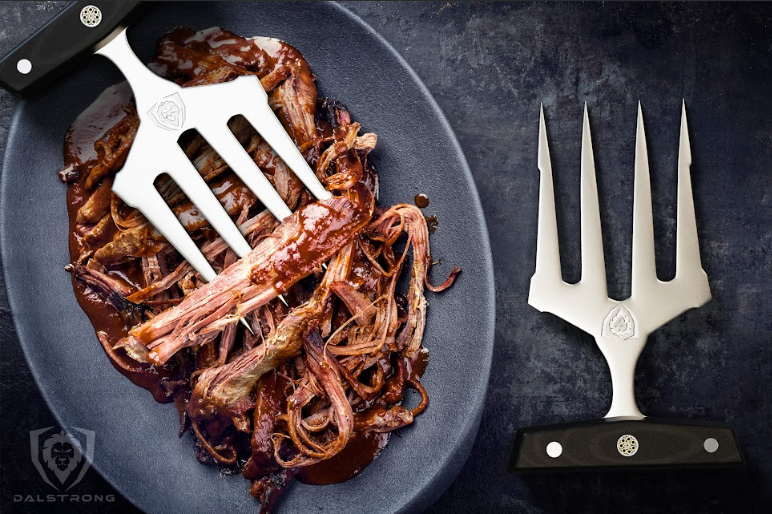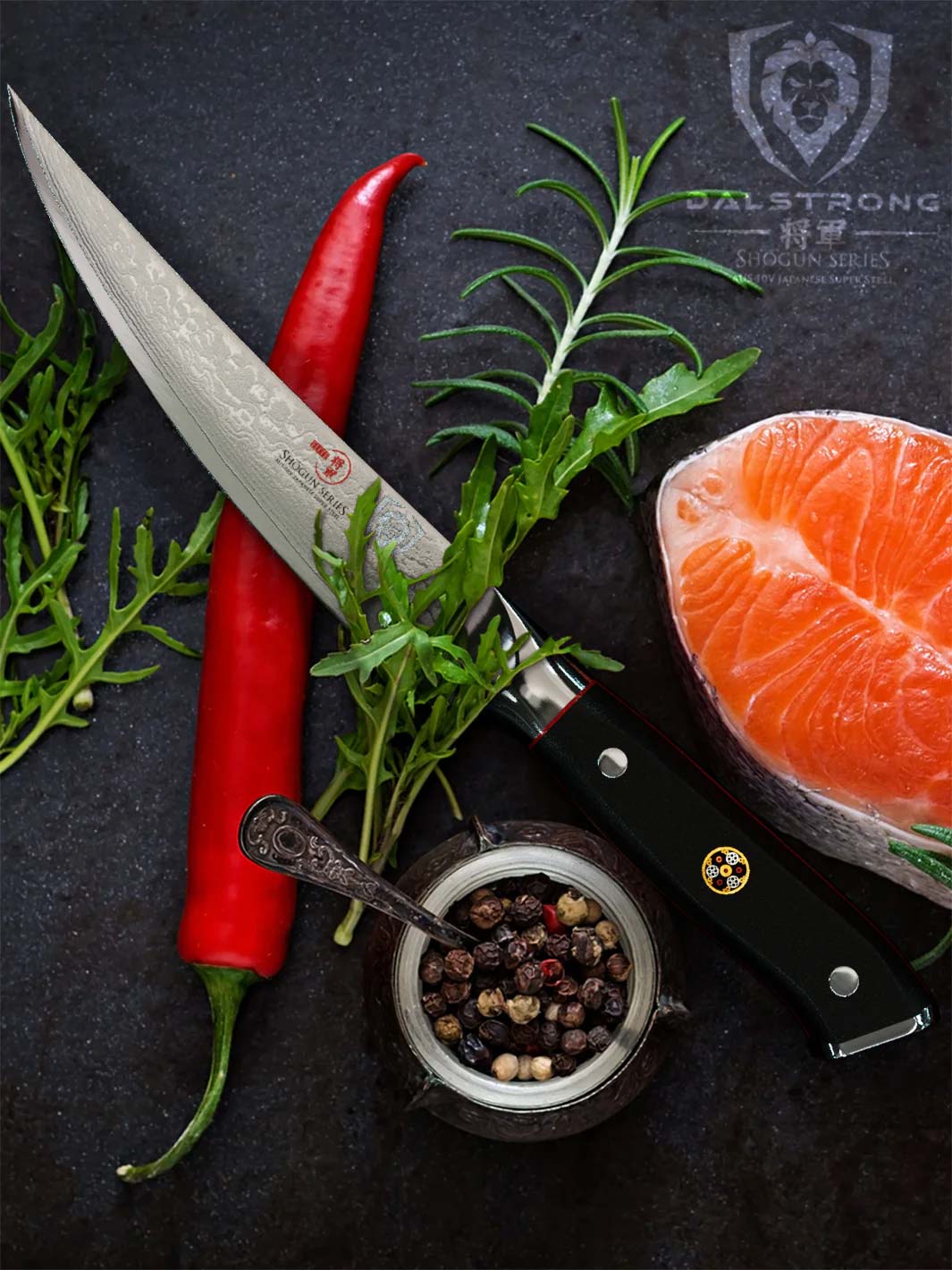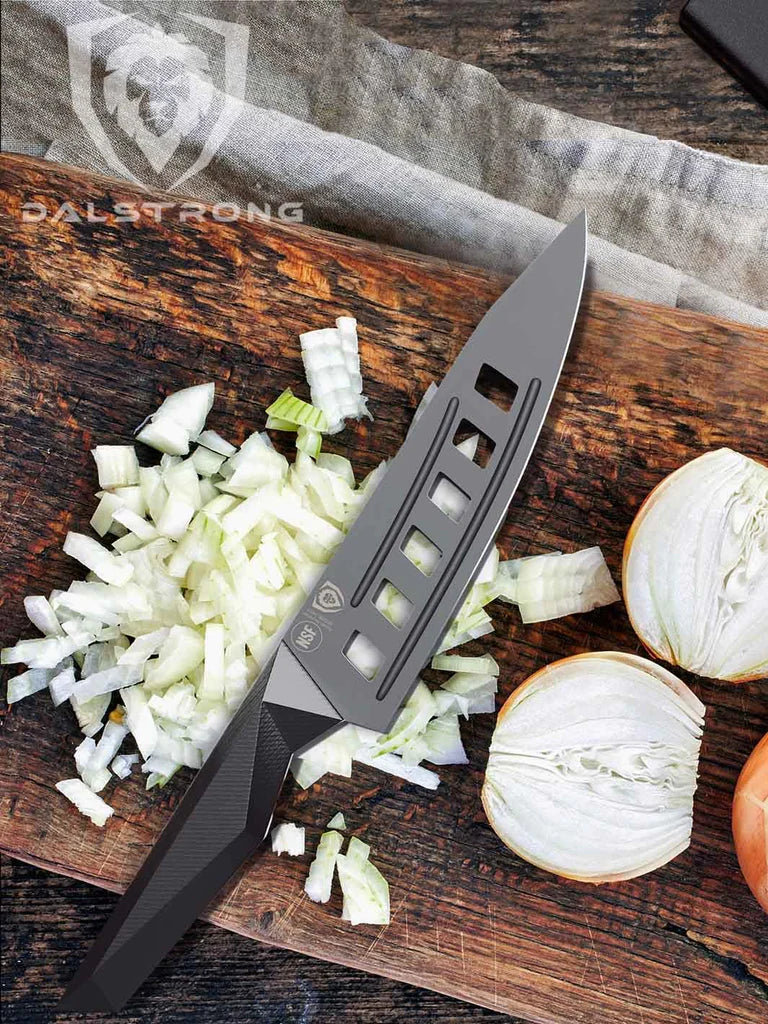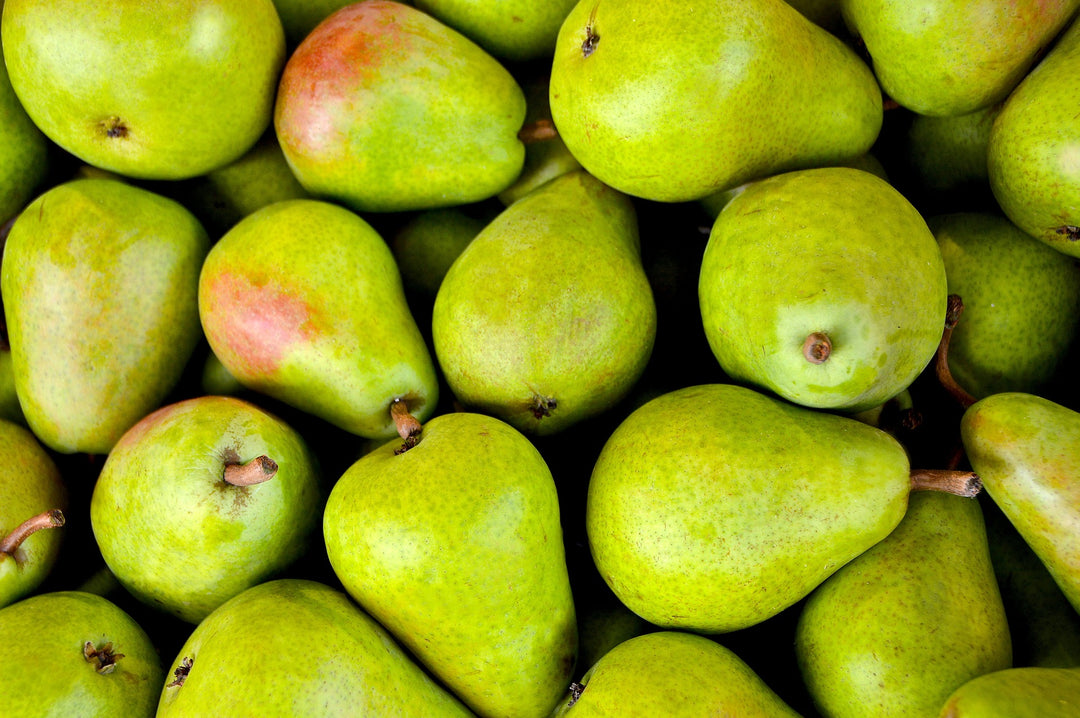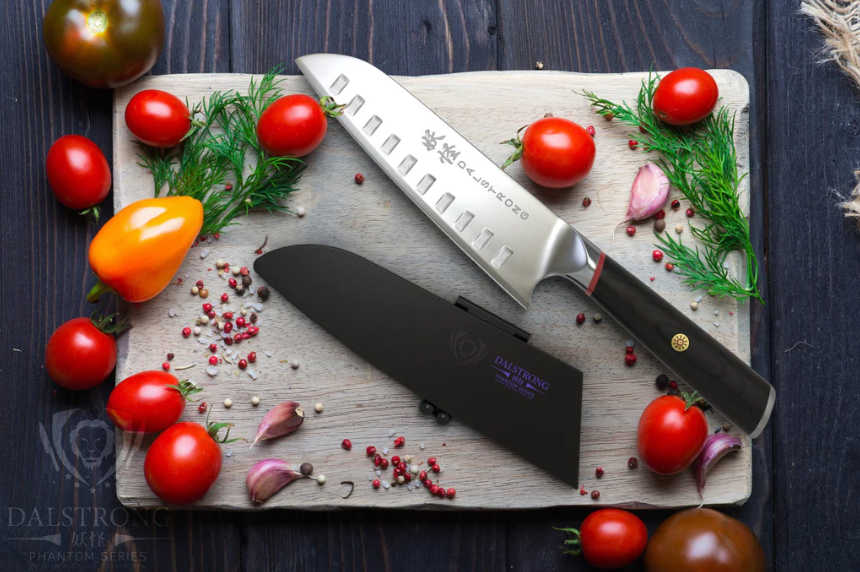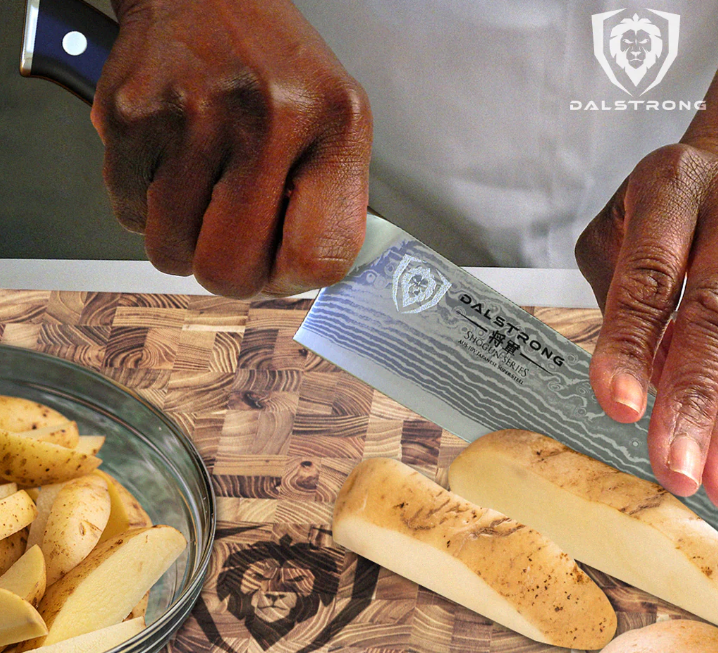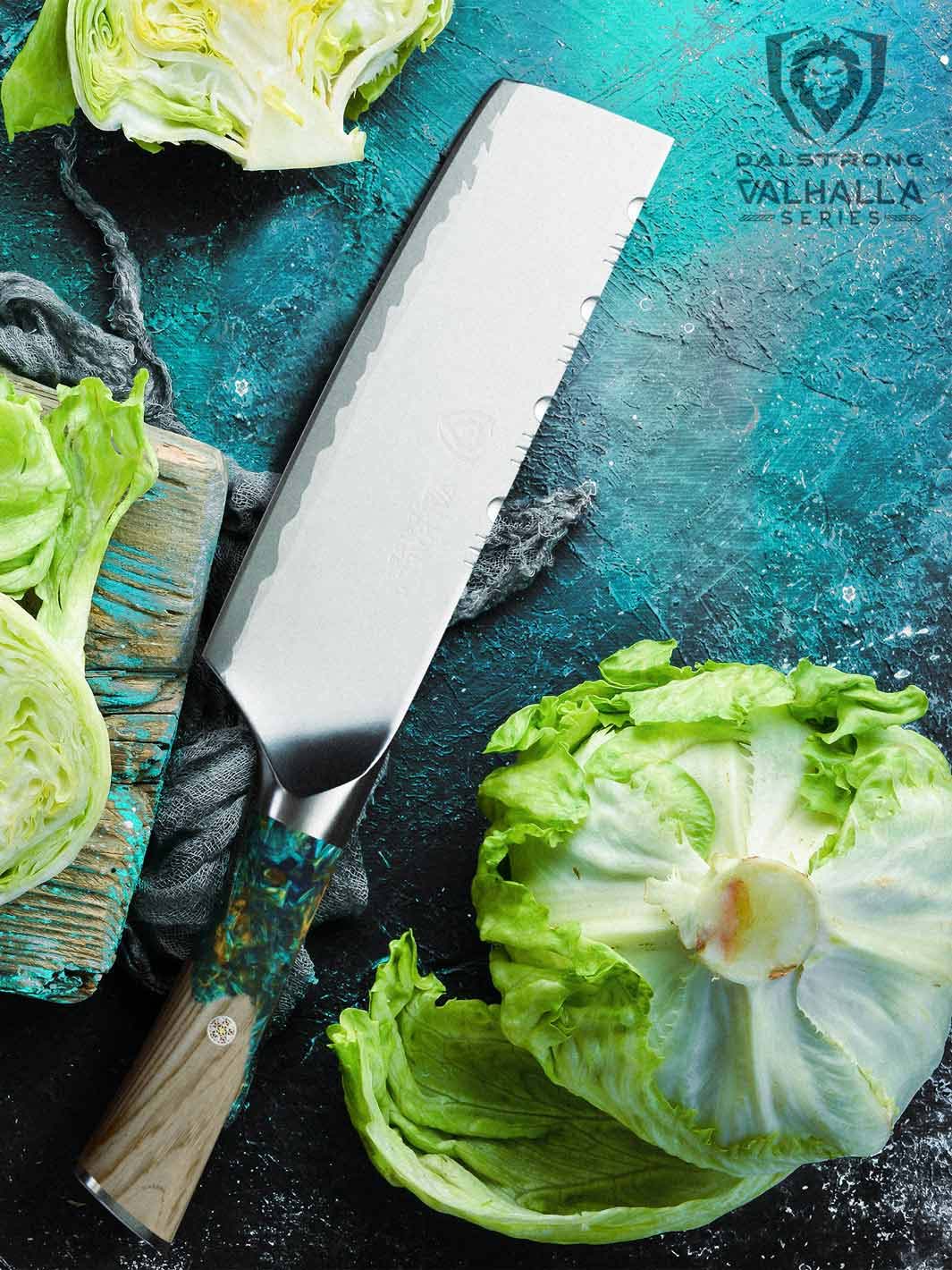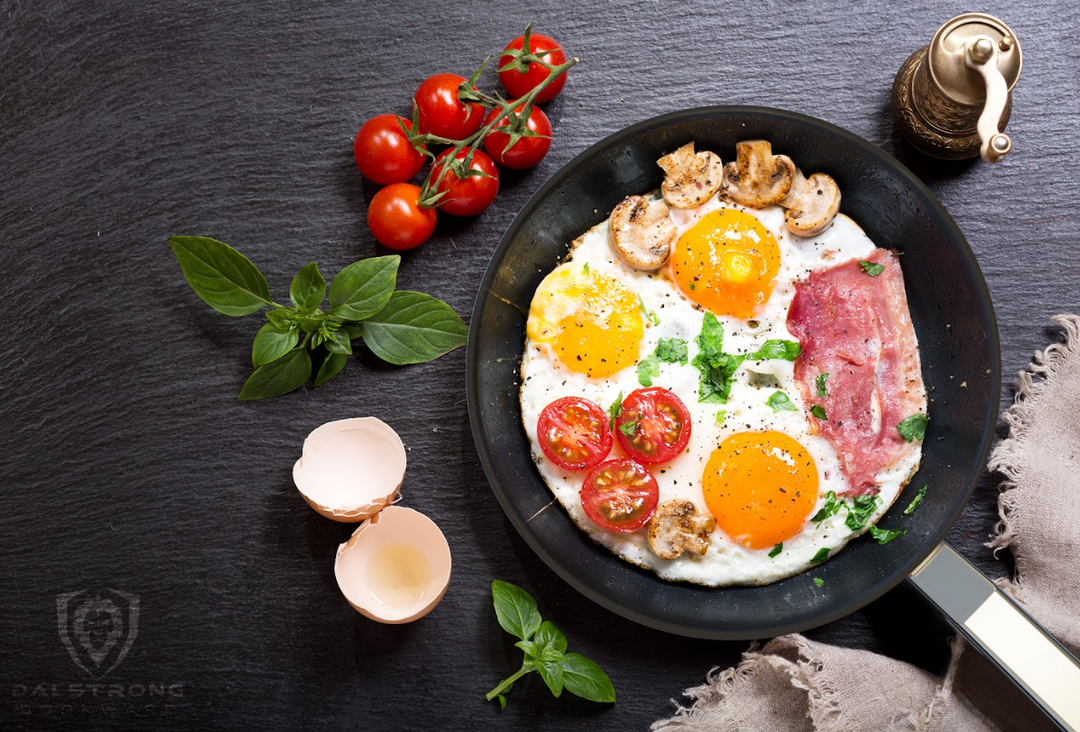How To Cut A Mango
How to Cut a Mango
- Slice off the sides, away from the mango pit
- Slice the mango’s flesh to its peel
- Scoop out the mango flesh
Mango is an exquisite fruit, which finds itself in more and more recipes. It adds sweetness to savory salsas and punch to healthy smoothies. It can also be the star attraction in your bowl of fruit salad. In short, having mango chunks on hand will always be an asset.
If you are new to mangos, it might seem like a daunting task to cut it properly. Rest assured, you don't need amazing knife skills to complete the task. Just a few quick kitchen tips will do the trick. In this article we will look at the proper way to cut this delicious fruit, and what cutlery is best suited to do the job.
1. Detailed Method of Cutting a Mango
7'' Chef's Knife | Shogun Series | Dalstrong ©
There are various methods for cutting a mango. And you may decide to play with different techniques of slicing this delicious fruit. However, here we will discuss a straight-forward way to cut a mango.
1. Slice off the sides, away from the mango pit
The mango seed is a flat oblong pit in the center of the fruit. The task is to use your paring or chef knife to cut along the sides of the pit, cutting the mango cheeks from the seed.
To accomplish this: stand the mango on its end, stem down. From this position, use your sharp knife to make your first vertical cut. Then repeat this cut from the other side.
Afterward, you will have three mango pieces: a mango half X 2 and a middle piece.
2. Slice the mango’s flesh to its peelYou will now take your small paring knife, or chef’s knife, and slice lengthwise and crosswise. This will leave you with diced mango and cubed mango pieces.
Of course instead of this dicing method, you could also slice or score the mango, at this point, if your mango recipe requires sliced or scored mango.
Make sure to avoid cutting through the mango skin, while making these cuts.
3. Scoop out the mango fleshFrom this point, you can take a spoon and scoop out the remaining flesh. Now, you can add this sweet fruit to a salad, smoothie, mango salsas, sauce for chicken or fish, or any other mango dish.
Once you get all of the available mango flesh, you can throw out the pit and the skin.
Kitchen tools: For this simple procedure, you will only need a sharp knife (we recommend a paring knife or a chef knife) and a spoon.
If you prefer to peel the mango first, you can use a good paring knife, or your trusty vegetable peeler.
Pro tip: As with any food preparation, remember to equip yourself with a high quality cutting board to help maintain your knife’s razor sharp edge.
Pro tip #2: Mango can be a bit messy. Treat yourself to a stylish apron to keep yourself neat and clean.
2. How Do I Store Mango?

The delicious mango tree has bless us with some amazing recipes to create. From the classics already mentioned, to the more unique mango quinoa salad recipes. But what do we do after we've cut the thing?
- Let a hard mango sit until you have a ripe mango.
- Once you have cut your mango, you can place it in an airtight container and store it for up to five days in the fridge.
- You may also want to take some of your cut and cubed mango, place it in a resealable plastic bag and save it in your freezer. Frozen mango pieces can last up to a year in the freezer, and are a fantastic addition to your favorite smoothie recipe.
3. When is Mango in Season?
7'' Santoku Knife | Phantom Series | Dalstrong ©
Mango is a tropical fruit, and therefore likes the warm weather. Its peak season is therefore during the summer, specifically between May and September.
Still, you can find imported mangoes in your local market throughout the year so fear not, you can make your famous mango salsas all year round.
4. Knife Recommendations For Cutting Mango
Now that we know how to cut the mango, we must consider the proper instrument to be our mango cutter. Here are our top 5 recommendations:
1. Chef's Knife 6" | Shogun Series X | Dalstrong ©
This Shogun Series chef’s knife marries function with supreme elegance. Having a shorter blade than some of its sibling chef knives lends it an elusive lightness and maneuverability. With this razor sharp stainless steel blade, you are in total control. Handle your mango with razor sharp precision. And don’t stop there, with this blade you are ready to tackle any of your meal prep responsibilities.
Pros:
- 6” precision forged blade with an ultra-premium Japanese AUS-10V ‘super steel’ cutting core at 62+ Rockwell hardness for unrivaled performance and incredible edge retention
- Precisely tapered blade minimizes surface resistance for buttery smooth cut through
- Ergonomic handle shape for superior hand control, agility and comfort
Cons:
- Smaller blade length might not offer the power of bigger Dalstrong chef knives
- Hammered tsuchime finish might not fit everyone’s personal style
- Though you don't need any amazing knife skills, with any razor sharp blades likes this there is a necessity to take caution during the adjustment period after buying
2. Chef's Knife 6" | Gladiator Series | NSF Certified | Dalstrong ©
This Gladiator Series chef’s knife, like the Shogun knife before, has a 6” razor sharp, stainless steel blade. This blade can be your workhorse. It will handle anything you throw at it, from heavy-duty cuts to precise slicing. From prepping chicken and steak to slicing and dicing mango and avocado, this chef’s knife is up to the task.
Pros:
- Tall blade height gives knuckle clearance to assist with food preparation and chopping activity. Makes it easy to peel and cut the mango
- Ergonomic handle shape for maximum comfort, grip and maneuverability
- Full tang for incredible robustness & quality
Cons:
- Some people prefer Japanese steel to German
- Rockwell hardness of 56+ means that this steel is not as hard as some of its more pricey siblings, like the Shogun Series Chef knife above
3. Paring Knife 4" | Phantom Series | Dalstrong ©
This Phantom Series paring knife is a precision specialist specifically engineered for coring, scoring, peeling, mincing, and slicing. This longer than average paring knife, not only can handle delicate cutting work and design, but it is functional as well.
Its pakkawood handle will fit comfortably in your palm and give you the flexibility and maneuverability you crave to slice and cut your mango perfectly to your desire.
Pros:
- Full tang for incredible robustness and quality
- Blade’s spine is hand polished to a smooth finish for enhanced pinch grip comfort
- Traditional Japanese D-shaped handle designed to tuck into the palm of your hand for superior hand control, comfort and agility
Cons:
- Slightly longer blade than some of its sibling paring knives, might not offer quite as much maneuverability
- Pakkawood handles might not fit with everyone's personal style
4. Paring Knife 3.5" | Gladiator Series | NSF Certified | Dalstrong ©
This Gladiator paring knife is a master of precision. It features a small, narrow, but ruthlessly sharp blade that tapers to a point. A must add to any knife collection or kitchen set, this stainless steel blade is excellent for coring, mincing, and peeling fruits and vegetables; slicing shallots, herbs, or a clove of garlic; detailed, controlled cutting, such as cutting shapes or vents; and scoring patterns and designs on surfaces of food.
Its ergonomic handle offers extra comfort to handle any paring task. Feel at ease, entrusting this blade to all of your mango slicing needs.
Pros:
- Precision forged, ultra sharp, wear resistant, single-piece, high carbon German ThyssenKrupp Steel at 56+ Rockwell
- Full tang for incredible robustness & quality
- Added chromium for stain resistance
Cons:
- More expensive paring knife options might offer a higher Rockwell hardness
- 3.5” blade might be smaller than what some are looking for in their paring knife blade

The Omega Series is the perfect paring knife to cut your mango, or any other fruit and veg you want to prepare. Given its length and sharpness, this blade can double as a deft utility knife. An essential for any serious chef or cook, this paring knife is remarkably versatile.
While specifically engineered for coring, slicing, peeling fruits and vegetables, scoring detailed patterns and mincing herbs, this sharp blade is limitless in its abilities on the cutting board. Its G10 woven fiberglass handle adds comfort, durability and toughness to this remarkable blade.
Pros:
- Incredible Edge Retention at 63+ Rockwell. Cut longer, go further
- BD1N American forged Hyper Steel. With an added Vacuum Treatment The ultimate steel for the ultimate performance
- Ergonomic handle with non-stick grip for comfort and ease while you peel and cut a mango
Cons:
- Due to the knife’s advanced features, the price tag might be over some budgets
- Might be more knife than some are looking for from their paring knife
6. Bird's Beak Tourne Paring Knife 2.75" | Gladiator Series | NSF Certified | Dalstrong ©
This Bird’s Beak paring knife is a master at intricate cuts. Its small, curved blade makes short work of slicing spherical fruits or peeling round vegetables. Though small in size, this sharp knife still brings much to the cutting board. It will make prep time a breeze.
Whatever your mango recipe calls for, the bird’s beak paring knife is there to garner the best results. When prepping fruits and veggies, you will be glad to have this one on your knife rack.
Pros:
- Precision forged, ultra sharp, wear resistant, single-piece, high carbon German ThyssenKrupp Steel at 56+ Rockwell
- Tall blade height gives knuckle clearance to assist with food preparation and chopping activity
- Stainless steel second bolster (end cap) adds counter balance and distinctioN
Cons:
- Not everyone is looking for a paring knife with a curved blade
- At under 3”, this blade might not be long enough for some tastes
5. Frequently Asked Questions
5.5'' Serrated Utility Knife | Crusader Series | Dalstrong ©
What is the best way to cut a mango?
This is a subjective question, and really depends on how you would like to utilize the mango. For instance, slicing the mango meat is good for adding it to a fruit salad, dicing or cubing it makes sense for making a salsa or a smoothie.
Do you have to peel a mango?
You do not have to peel a mango. You can instead cut the mango cheeks, then take each mango half and slice the mango meat, utilizing the peel as a small container until you scoop the meat. However, peeling the skin is always an option.
How do you cut a mango for salsa?
Use your paring or chef knife to slice off the mango cheeks. Cut away from the seed. Then dice up the mango meat. This will leave you with small cubes of sweet mango to add to a delicious salsa recipe.
Why can't you eat the skin of a mango?
The skin of the mango contains urushiol, a compound that causes some people allergic reactions, including in worst case scenarios: rashes and shortness of breath. Therefore, while the mango peel does contain some nutrients, it is recommended that you do not eat it.
Discover The Dalstrong Difference Today
Written by Jonathan ScolnickBorn in Philadelphia and living in Argentina, Jonathan loves learning about culture through the food and conversation at the dinner table.


























































































































